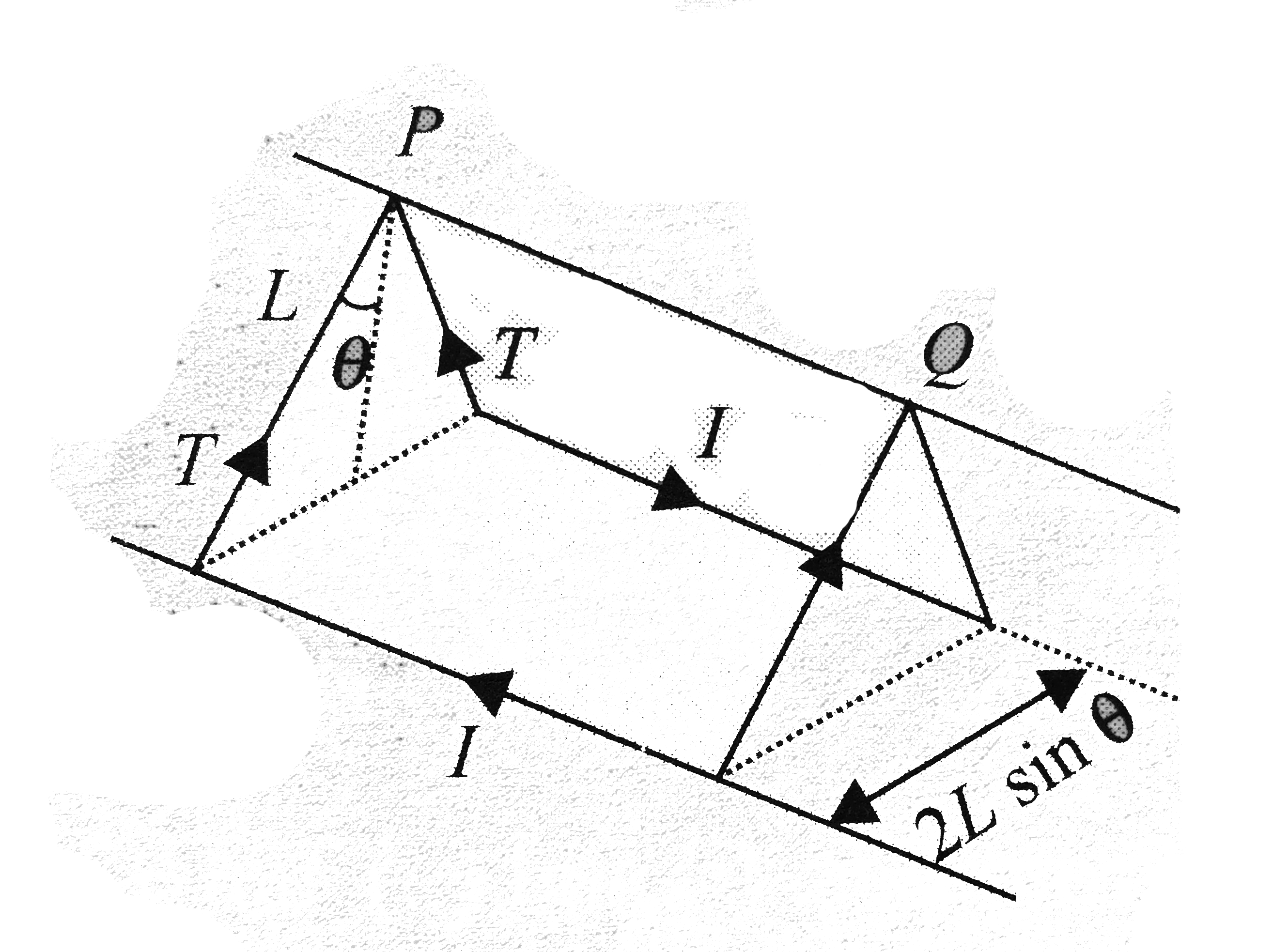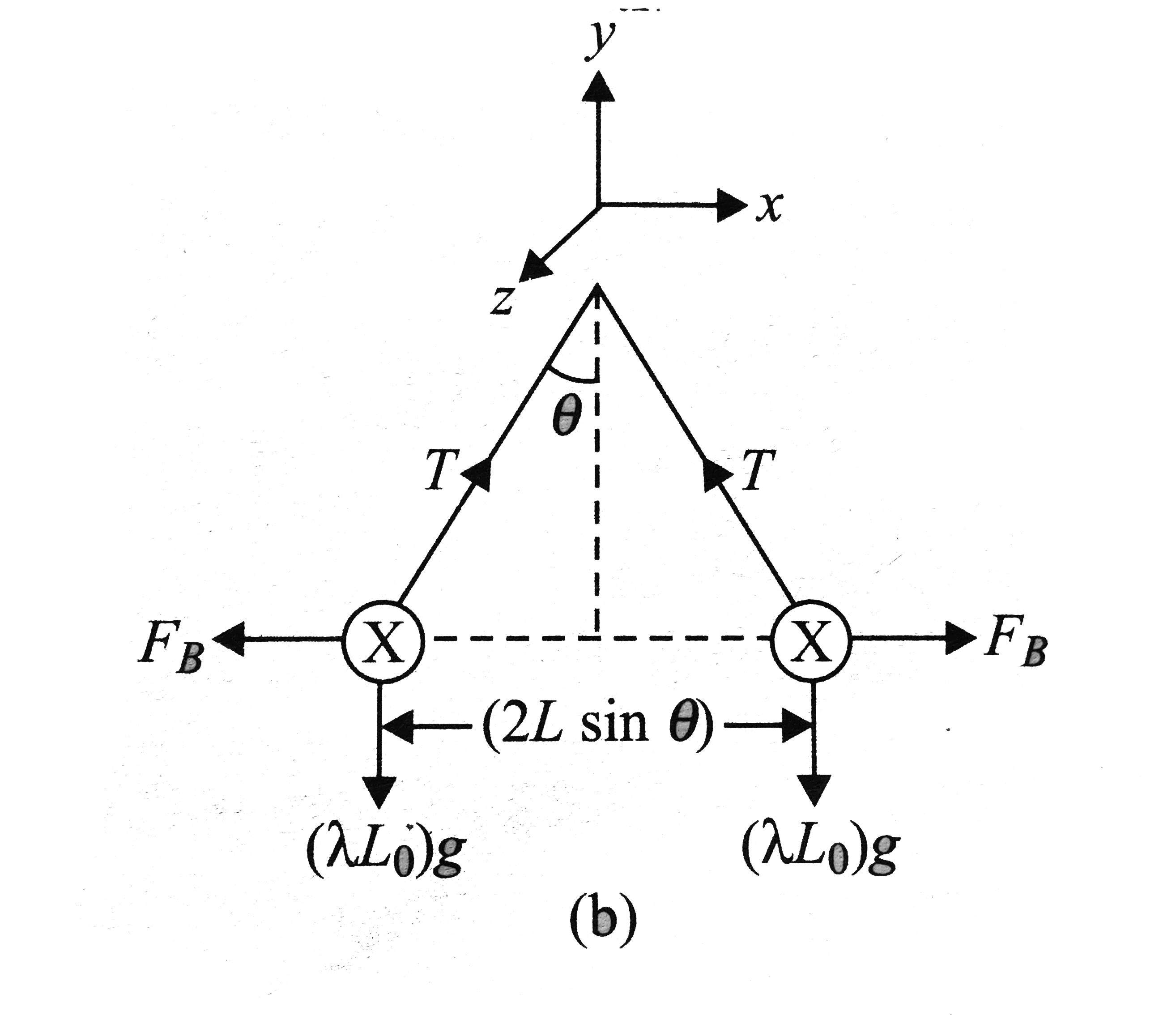Two long parallel wires carry currents of equal magnitude but in opposite directions. These wires are suspended from rod PQ by four chords of same length L as shown in Fig The mass per unit length of the wires is . Determine the value of assuming it to be small.

The forece per unit length between current carrying parallel
wires is .
If two wires carry current in
opposite directions, the magnetic force is repulsive, due to
which the parallel wires in Fig.
have moved out so that
equilibrium is reached.
The figure shows free body
diagram of each wire. In equilibrium,
Now dividing Eq.(ii) by (i), we get
The magnetic force
For small ,
On substituting Eq. (iv) in (iii), we get

Topper's Solved these Questions
- BOOK - CENGAGE PHYSICSCHAPTER - SOURCES OF MAGNETIC FIELDEXERCISE - Solved Example20videos
SOURCES OF MAGNETIC FIELD
- BOOK - CENGAGE PHYSICSCHAPTER - SOURCES OF MAGNETIC FIELDEXERCISE - Concept Exercise 2.135videos
SOURCES OF MAGNETIC FIELD
- BOOK - CENGAGE PHYSICSCHAPTER - SEMICONDUCTOR ELECTRONIC : MATERIALS, DEVICES AND SIMPLE CIRCUITSEXERCISE - QUESTION BANK12videos
SEMICONDUCTOR ELECTRONIC : MATERIALS, DEVICES AND SIMPLE CIRCUITS
- BOOK - CENGAGE PHYSICSCHAPTER - THERMAL PROPERTIES OF MATTEREXERCISE - Question Bank40videos
THERMAL PROPERTIES OF MATTER
Similar Questions
Knowledge Check
- Question 1 - Select One
Two parallel wires are carrying electric currents of equal magnitude and in the same direction. They exert
AAn attractive force on each otherBA repulsive force on each otherCNo force on each otherDA rotational torque on each other - Question 2 - Select One
Two parallel wires are carrying electrical currents of equal magnitude and in the same direction. They exert
Aa repulsive force on each otherBan attractive force on each otherCno force on each otherDa rotational torque on each other - Question 3 - Select One
Two free parallel wires carrying currents in opposite directions
Arepel each otherBattract each otherCneither attract nor repelDmay attract as well as repel under different values of currents
Two free parallel wires carrying currents in opposite directions
View SolutionTwo free parallel wires carrying currents in opposite directions
View SolutionTwo long parallel copper wires carry currents of 5A each in opposite directions. If the wires are separated by a distance of 0.5m , then the force between the two wires is
View SolutionTwo long parallel copper wires carry current of 5A each in opposite directions. If the wires are separated by a distance distance of 0.5m, then the force per unit length between the two wires is
View SolutionTwo long parallel conducting wires carry current I in same direction, placed at distance b. Force per unit length of wire is
View Solution

